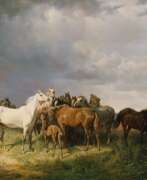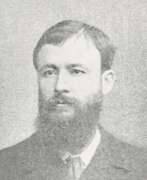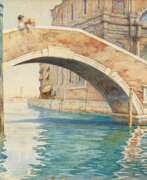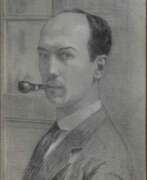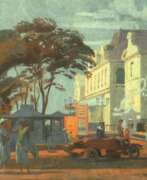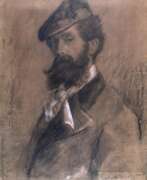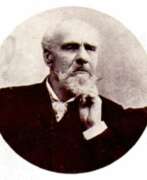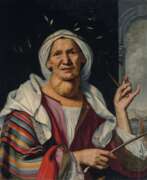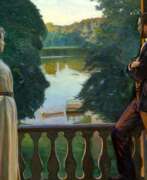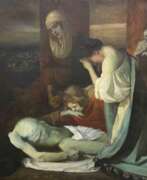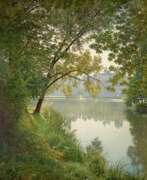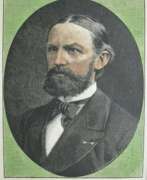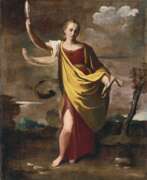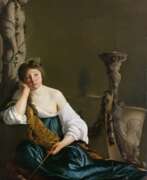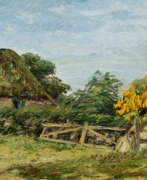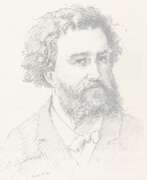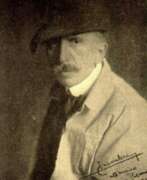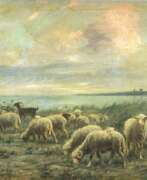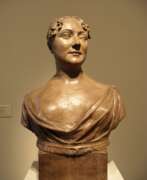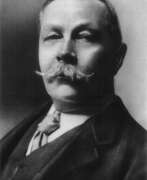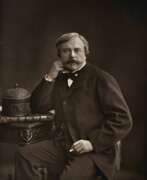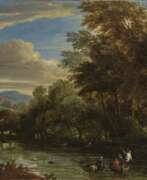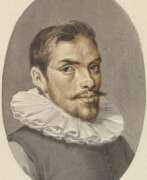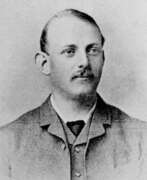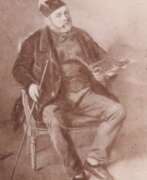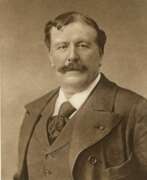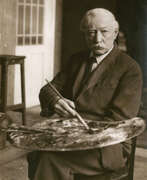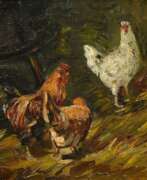Naturalism


Robert Adams is an acclaimed American photographer known for his profound exploration of the American West's changing landscapes. His work, which gained prominence in the mid-1970s, delves into the tension between the natural beauty of the land and the marks of human encroachment. Adams's photography is a reflection on humanity's relationship with the environment, offering both a critique and a celebration of the landscape.
Robert Adams's notable series, such as "Turning Back" and "The New West," showcase his unique perspective on environmental and urban development issues. His work extends beyond just capturing images; it is a thoughtful commentary on the balance between nature and industrialization. His photographs, often devoid of people, focus on the land itself, telling a story of alteration and resilience.
Exhibitions of Adams's work, such as "American Silence: The Photographs of Robert Adams" at the National Gallery of Art, provide insight into his 50-year career and his ability to capture the silent yet profound narratives of the American landscape. His pieces are part of major collections and have been featured in numerous retrospectives, underlining his influence and significance in the world of photography.
For art collectors and enthusiasts, Robert Adams's work offers a poignant perspective on the American West, blending aesthetic beauty with critical environmental commentary. Engaging with his work invites reflection on our interaction with the landscape and our role in shaping the environment.
If you're interested in staying updated on Robert Adams's work and exhibitions, consider subscribing to newsletters from galleries and museums that feature his art. This way, you'll be informed about new displays of his work and opportunities to engage with his insightful perspectives on the American West.
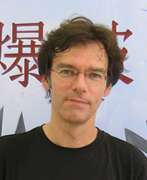

Andreas Amrhein is a contemporary german artist. His first verified exhibition was Arbeiten auf Papier „Blau“ at Galerie Michael Schultz in Berlin in 1994. Andreas Amrhein is most frequently exhibited in Germany, but also had exhibitions in Austria, China and elsewhere.
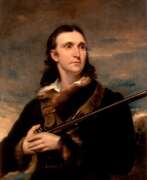

John James Audubon was a French-American ornithologist and painter, renowned for his groundbreaking illustrations of American birds. Born in 1785 in Les Cayes, Saint-Domingue (now Haiti), Audubon is remembered for his keen observation skills and innovative artistic techniques.
Audubon's most famous work, "The Birds of America," transformed the field of ornithology by presenting birds in lifelike poses and detailed backgrounds. Published between 1827 and 1838, it contained 435 hand-colored engravings, showcasing over 489 bird species. His unique approach to illustrating birds in their natural habitats was a departure from traditional methods, which often portrayed birds in rigid poses.
Audubon used a wire armature to position freshly-killed specimens, allowing him to depict birds with a sense of movement and vitality. This innovative technique was truly revolutionary and set him apart from his contemporaries. Additionally, Audubon's artistic skill and attention to detail made his illustrations highly sought after, with surviving copies of "The Birds of America" considered valuable collectibles today.
For art collectors and enthusiasts, Audubon's work continues to be a source of inspiration and admiration. His legacy endures through his contributions to ornithology and the art world, with museums and galleries showcasing his work. If you're interested in learning more about John James Audubon and his famous illustrations, consider subscribing to our newsletter for updates on new product sales and auction events related to his work.
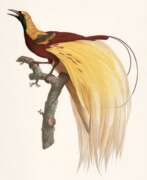

Jacques Barraband was a French zoological and botanical illustrator, renowned for his lifelike renderings of tropical birds. His pictures were based on mounted specimens and his illustration was considered the most accurate ones made during the early 1800s.


Maria Konstantinovna Bashkirtseva (Russian: Мария Константиновна Башки́рцева) was a Russian artist of the second half of the 19th century. She is known as a master of domestic and portrait genres. Most of Bashkirtseva's paintings are in a realistic style.
In her short 25-year life Maria Bashkirtseva managed to gain recognition - her works were regularly exhibited in the Paris salons and received awards. But the artist became widely known after her death through the publication of her diaries. The famous "Diary" by Bashkirtseva immediately became a European bestseller. At the beginning of the XXI century on the basis of the original manuscripts of the author found in the National Library of France the complete 16-volume version of the diary was issued.
Much of the artist's work was lost during World War II. The few surviving masterpieces are now kept in museums in Ukraine, Russia, France and the USA.


Jules Bastien-Lepage was a French painter closely associated with the beginning of naturalism, an artistic style that emerged from the later phase of the Realist movement.
His most famous work is his landscape-style portrait of Joan of Arc which currently resides at the Metropolitan Museum in New York City.


Leonardo Bazzaro was an Italian painter who worked mainly on landscapes and vedutas. He studied painting at the Brera Academy in Milan.
Leonardo Bazzaro is considered one of the leading representatives of Lombard naturalism.
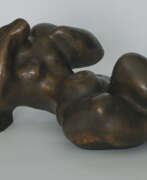

Curt Beckmann is a German painter and sculptor.
He studied at the Düsseldorf State Academy of Art, was a member of the Rhine Secession, Das Junge Rheinland, was a member of the Malkasten Association of Artists, the Association of West German Artists and the Association of German Artists.
Beckmann's work is distinguished by the contemplative quality of the female nude bodies. He gradually moved from naturalistic figures to an almost abstract expressionist representation of them.
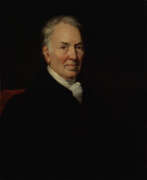

Thomas Bewick was an English wood-engraver and natural history author. Early in his career he took on all kinds of work such as engraving cutlery, making the wood blocks for advertisements, and illustrating children's books. He gradually turned to illustrating, writing and publishing his own books, gaining an adult audience for the fine illustrations in A History of Quadrupeds.
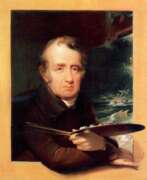

Thomas Birch was an English-born American portrait and marine painter.
He exhibited regularly at the Pennsylvania Academy of the Fine Arts for forty years, beginning in 1811, and managed the museum, 1812-1817. His work is collected at PAFA, the Library Company of Philadelphia, the Philadelphia Museum of Art, the Smithsonian American Art Museum, the U.S. Naval Academy, and the Museum of Fine Arts, Boston, among others. In 1833, he was elected into the National Academy of Design as an Honorary member.
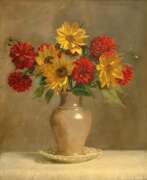

Theodor Bonenberger is a German painter and cavalry officer. He studied with Jacob Grunenwald and Karl von Geberlin at the Stuttgart Art School, then from April 30, 1887 - at the Royal Academy of Arts in Munich with Johann Kaspar Herterich and Carl von Marr. Has been on study trips to Italy, France, Spain and the UK. After completing his studies, he settled in Munich as a freelance artist. Bonenberger also held the rank of major in the cavalry in reserve. From 1895 he took part in many exhibitions in Munich, Düsseldorf and Vienna. In 1936, he completed a portrait of Adolf Hitler, which he presented to Eva Braun for her birthday. He dealt with flower, genre, portrait, landscape and nude painting.
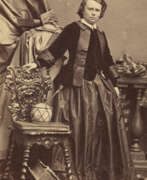

Rosa Bonheur, born Marie-Rosalie Bonheur, was a French artist known best as a painter of animals (animalière). She also made sculpture in a realist style. Her paintings include Ploughing in the Nivernais, first exhibited at the Paris Salon of 1848, and now in the Musée d'Orsay in Paris, and The Horse Fair, which was exhibited at the Salon of 1853 (finished in 1855) and is now in the Metropolitan Museum of Art in New York City. Bonheur was widely considered to be the most famous female painter of the nineteenth century.


Léon Bonnat was a French academic painter renowned for his realistic and expressive portraits. Bonnat's early exposure to art came from his time in Madrid, where he developed a deep admiration for the works of Diego Velázquez, which significantly influenced his style.
Bonnat's artistry flourished in Paris, where his compelling portraits earned him accolades and recognition. He became a prominent figure at the Paris Salon, receiving his first public commission in 1863 and a Medal of Honor in 1869. His works include powerful religious paintings and portraits that captured the essence of his subjects with stark naturalism, distinct from the idealized finish typical of his era.
His teaching career at the Ecole des Beaux-Arts was equally distinguished. Bonnat was revered not just for his painting but also for his mentorship, guiding the next generation of artists, including Henri de Toulouse-Lautrec and Henri Matisse. He advocated for the freedom of artistic expression and encouraged his students to study masterworks directly, particularly advocating for trips to Madrid's Prado Museum.
Bonnat also assembled an exceptional collection of art, which he generously donated to the city of Bayonne. This collection included works from masters such as Rembrandt and Michelangelo, ensuring his legacy extended beyond his own creations.
His contributions to art were recognized with high honors, including the Grand Croix of the Legion of Honor. Bonnat's works continue to be celebrated for their technical prowess and emotional depth, residing in prestigious collections such as the Musée du Petit Palais and the Musée Bonnat.
For enthusiasts and collectors, Léon Bonnat’s work offers a glimpse into the soul of the French academic tradition and the evolution of portrait painting. Stay updated on exhibitions and sales featuring Bonnat's timeless art by signing up for our newsletter dedicated to bringing the latest news to art collectors and experts.


Jules Adolphe Breton was a French artist celebrated for his realistic portrayals of peasant life in 19th-century France. His work, deeply influenced by the rural landscapes and traditions of Artois, reflects a bygone era increasingly threatened by industrialization. Notable for capturing the dignity and toil of peasants, Breton's paintings like "The Gleaners" and "The Blessing of the Wheat" earned accolades for their heartfelt depiction of rural customs and their socio-economic undertones, particularly during a period when the rights of the rural poor were heavily debated.
Jules Breton's artistic merit extended beyond painting; he authored several books and volumes of poetry that provide insights into his life and the era's art scene. His notable works such as "The Song of the Lark" and "The End of the Day" are housed in prestigious institutions like the Art Institute of Chicago, demonstrating his posthumous recognition. This piece, in particular, was famously declared a favorite by Eleanor Roosevelt at the 1934 Chicago World's Fair, marking a peak in his acclaim.
For art collectors and experts, Jules Breton's oeuvre offers a poignant glimpse into 19th-century rural France, preserved through his exceptional skill and emotional depth. His works not only depict the daily lives of peasants but also resonate with broader themes of tradition and change, making them significant both historically and artistically.
For updates on exhibitions and sales of Jules Adolphe Breton's works, consider signing up for relevant newsletters. This ensures you remain informed about opportunities to acquire pieces by this distinguished painter.
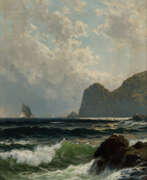

Alfred Thompson Bricher was a painter associated with White Mountain art and the Hudson River School.
In the 1870s, he primarily did maritime themed paintings, with attention to watercolor paintings of landscape, marine, and coastwise scenery. He often spent summers in Grand Manan, where he produced such notable works as Morning at Grand Manan (1878). In 1879, Bricher was elected into the National Academy of Design as an Associate member.


Heinrich Christian August Buntzen was a Danish landscape painter.
His first showing was at an exhibition in Charlottenborg Palace in 1824 and, later, he won several prizes for his landscape paintings. During the 1830s, the academy purchased several of his works, as did the Royal Collection.
He was awarded the Order of the Dannebrog in 1877.
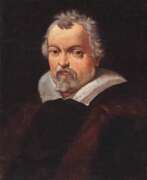

Lodovico Carracci was a significant Italian painter and printmaker from Bologna, renowned for his contributions to Baroque art and the Bolognese school. He was a pivotal figure in reinvigorating Italian art, particularly fresco art, which had been overshadowed by the formalistic Mannerism of the late Renaissance period.
His works are distinguished by their emotional depth and spiritual intensity, often achieved through bold gestures and dramatic lighting. As an artist, he was instrumental in establishing the Carracci workshop and style, alongside his cousins Agostino and Annibale Carracci. Together, they founded an art academy in Bologna around 1585 that focused on a naturalistic approach to painting, emphasizing life drawing and a return to classical principles.
Lodovico Carracci was known for his skillful use of colour and his ability to create harmonious and balanced compositions. His works often depicted religious and mythological subjects and he was particularly famous for his frescoes, which adorned many churches and palaces in Bologna. He was also an influential teacher, with Guido Reni and Domenichino among his pupils.
Among Carracci's known works are notable religious compositions like "The Lamentation" and "Madonna and Child with Saints," which are now housed in prestigious museums such as The Metropolitan Museum of Art in New York. He also worked on significant fresco cycles in private palaces, such as the cycle depicting the story of Jason and the Argonauts in the Palazzo Fava, completed in 1584.
If you'd like to stay updated on new art-related product sales or auction events featuring works by Lodovico Carracci, consider signing up for updates to receive notifications about upcoming events and sales. This subscription is exclusively for receiving alerts on art and auction news related to Carracci's works and does not include promotional materials unrelated to art.
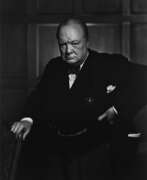

Sir Winston Leonard Spencer Churchill was a British statesman, soldier and writer who served as Prime Minister of the United Kingdom from 1940 to 1945, during the Second World War, and again from 1951 to 1955. Apart from two years between 1922 and 1924, he was a Member of Parliament (MP) from 1900 to 1964 and represented a total of five constituencies. Ideologically an economic liberal and imperialist, he was for most of his career a member of the Conservative Party, which he led from 1940 to 1955. He was a member of the Liberal Party from 1904 to 1924.


Mikhail Konstantinovich Clodt (Russian: Михаил Константинович Клодт) was a Russian landscape painter of German origin in the second half of the 19th century. He was one of the first to introduce genre motifs into the landscape genre.
Mikhail Clodt is known for his unique painting style. His works are characterized by serenity, rigorous composition, detailed drawing of the smallest objects. The presence of human figures on canvas animates and elevates the nature.
Clodt actively worked in the Board of the Association of Traveling Exhibitions, whose goal was to acquaint residents of the province with academic painting. The works of Mikhail Clodt are among the masterpieces of world art and were repeatedly presented to the public at international exhibitions organized in European capitals.


Johann Wilhelm Cordes was a German landscape painter.
Johann Wilhelm Cordes entered the Academy of Fine Arts in Prague, then moved to the Academy of Fine Arts in Düsseldorf in 1842, where he studied with Karl Friedrich Lessing and Johann Wilhelm Schirmer.
He specialised in realistic landscapes painted during his travels. He also created coastal scenes with staffage.


Jean Désiré Gustave Courbet was a French painter who led the Realism movement in 19th-century French painting. Committed to painting only what he could see, he rejected academic convention and the Romanticism of the previous generation of visual artists. His independence set an example that was important to later artists, such as the Impressionists and the Cubists. Courbet occupies an important place in 19th-century French painting as an innovator and as an artist willing to make bold social statements through his work.
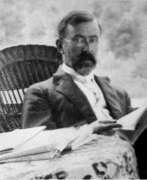

Charles Courtney Curran is an American impressionist painter.
He was educated at the National Academy of Design (New York), then studied at the Académie Julian in Paris.
Curran is known for his romantic depictions of young women in nature, where they are walking, playing sports or just admiring flowers. The artist also painted plein air, experimenting with a variety of artistic styles, including Impressionism, Symbolism, Tonalism and Naturalism.
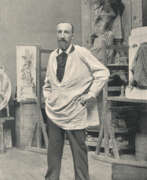

Aimé-Jules Dalou was a 19th century French sculptor. He went down in history as a supporter of realism in world art. Dalou was famous for creating monumental bronze monuments, most of which are located in Paris.
Aimé-Jules Dalou, brought up by his parents in the spirit of rejection of social injustice, throughout his career expressed in his work sympathy for the working class. The heroes of his works were often ordinary French toilers, and the master himself was a lifelong supporter of the ideas of republican socialism, because of which he was persecuted.
In the career of Dalou's downs were replaced by ups. The sculptor was awarded the French Order of the Legion of Honor in three degrees and at the World Exhibition of 1899 he received the main prize for the monument "Triumph of the Republic. In addition, the artist was one of the founders of the Société Nationale des Beaux-Arts and the first head of the sculpture department in this creative association.
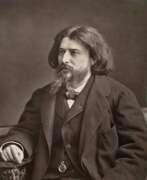

Alphonse Daudet was a French novelist and short-story writer, best remembered for his sentimental tales of provincial life in southern France. Born in Nîmes in 1840, Alphonse Daudet's early life was marked by financial hardship, influencing much of his later work. He moved to Paris with his brother Ernest and quickly immersed himself in the literary world, publishing his first collection of poems, Les Amoureuses, at a young age.
Alphonse Daudet's career flourished with notable works such as Le Petit Chose, Tartarin de Tarascon, and Lettres de Mon Moulin, which highlighted the charm and simplicity of rural life in Provence. His storytelling, often infused with humor and satire, made significant contributions to French literature, capturing the essence of Provencal culture.
Despite his literary success, Alphonse Daudet's personal life was fraught with challenges, including a long-term illness that he bravely depicted in his later works. He passed away in Paris in 1897, leaving behind a legacy celebrated for its profound impact on regionalist literature and its vivid portrayal of French life and culture during the 19th century.
For those interested in the intricate tapestry of French literature and the enchanting allure of Provence, Alphonse Daudet's works offer a gateway to the past, brimming with the richness of its regional heritage and the timeless appeal of its narratives. To delve deeper into Daudet's life and explore his contributions to literature, subscribing to updates on related sales and auction events can be a rewarding pursuit for collectors and enthusiasts alike, ensuring they remain informed about opportunities to engage with his enduring legacy.
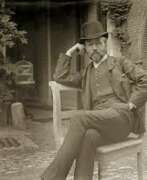

Jacques de Lalaing was an Anglo-Belgian painter and sculptor, specializing in animals. Lalaing was raised in England until 1875, when he moved to Brussels. He trained as an artist under Jean-François Portaels and Louis Gallait at the Académie Royale des Beaux-Arts in Brussels. With the encouragement of Thomas Vinçotte and Jef Lambeaux, Lalaing began to sculpt in 1884. As a painter he continued to work in a realistic, naturalistic style, as a portrait painter and producing historical scenes. As a sculptor he produced allegorical bronzes and memorial art. Along with his fellow animalier sculptors Léon Mignon and Antoine-Félix Bouré Lalaing established a distinctively Belgian tradition of animal art, to which the flourishing Antwerp Zoo contributed inspiration. In 1896 Lalaing became a member of the Royal Academy where he had studied, and from 1904 through 1913 he served as its director. His works are represented in the collections of museums in Antwerp, Bruges, Brussels, Ghent and Tournai.


François-Alfred Delobbe was a French naturalist painter.
At the age of 16 he entered the École des Beaux-Arts de Paris, first painting mythological, orientalist and genre scenes in an academic style. He then continued his studies in the studio of William-Adolphe Bouguereau, who encouraged him to concentrate on mythological scenes and portrait painting. In 1861, Delobbe made his debut at the Salon des Artistes Français with a portrait of his mother, which received a favorable critical response in the Parisian press. Throughout the 1860s, Delobbe enjoyed continued success at the annual Salon.
In these same years, the government commissioned him to paint frescoes for the town hall in the new 15th arrondissement of Paris. The importance of this large-scale project for the career of Delobbe can not be overestimated, it was with him that the artist began the rise of his career.
In the mature period of creativity, Delobbe's favorite theme became children and young women at work: they embroider lace or sift grain, evoking associations with the artist's favorite Brittany. Delobbe's Breton paintings were highly prized in the Paris salons for many years.
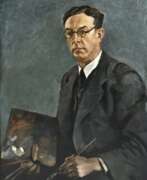

Paul Dom, born Paulus Ludovicus Carolus Dom, was a Belgian and Dutch painter and illustrator.
He studied at the Royal Academy of Fine Arts in Antwerp, lived in Belgium and the Netherlands, was granted Dutch citizenship in 1936 and lived in The Hague for the rest of his life.
Paul Dom was a versatile artist. He dabbled in drawing and painting and painted portraits, cityscapes and sketches, and genre scenes. At the same time he was a political cartoonist and illustrated books. Between 1917 and 1956 Dom illustrated hundreds of books, mostly for children.


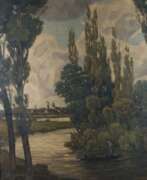

Heinrich Eberhard was a German modernist painter.
Eberhard studied at the Royal Academy of Fine Arts in Stuttgart, and was decisively influenced in his artistic development by the modernist pioneer Adolf Helzel (1853-1934). In 1920 he became a member of the Stuttgart "Üecht Group", which also included Willy Baumeister and Oskar Schlemmer, and was a member of the legendary Hölzelkreis.
Eberhard's oeuvre includes oil paintings, drawings, prints and stained glass windows and is characterized by a stylistic pluralism between expressive naturalism, cubist influences and abstraction.
During the Nazi "Degenerate Art" campaign in Germany in 1937, some of the artist's paintings were removed from galleries and destroyed, but in 1943 he was allowed to exhibit one canvas that met the tastes of the authorities. After the war, Eberhard continued to create with success, participating in exhibitions.


Alexander Eckener was a German painter and graphic artist. He received his initial artistic training and inspiration from Jacob Nöbbe, a local artist in Flensburg. With his support, Eckener was able to study at the Academy of Fine Arts, Munich, from 1888 to 1892. After graduating, he returned to his home town and became part of the Ekensund Artists' Colony. In 1899, he went to Stuttgart and was accepted by the State Academy of Fine Arts. There, he was a master student of Leopold Graf von Kalckreuth, who introduced him to the art of etching; another genre in which he became proficient. After 1908, he taught at that Academy himself and was named a Professor in 1912. He took on the position of Professor of lithography and woodcuts in 1925.
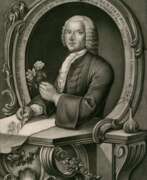

Georg Dionysius Ehret was a German botanist and entomologist known for his botanical illustrations.
Ehret's original art work may be found at the Natural History Museum in London, the Royal Botanic Gardens, Kew, The Royal Society, London, the Lindley Library at the Royal Horticultural Society, the Victoria and Albert Museum, at the University Library of Erlangen, the LuEsther T. Mertz Library of the New York Botanical Garden, and the Hunt Institute for Botanical Documentation in Pittsburgh, Pennsylvania.
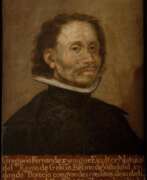

Gregorio Fernández was a Spanish Baroque sculptor, celebrated for his profound impact on religious art during the 17th century. Born in Sarriá, Lugo, in 1576 and later settling in Valladolid, Fernández became a pivotal figure in the Castilian school of sculpture. His works are renowned for their dramatic expressiveness and intricate detail, capturing both physical and moral pain alongside mystical experiences through the serene poses and expressive faces and hands of his figures. The realism in his sculptures was further enhanced by the use of glass for eyes, ivory for nails and teeth, and other materials to add authenticity.
Valladolid's artistic environment, shaped by the Counter-Reformation and the legacy of architects like Juan de Herrera, played a crucial role in Fernández's development. His sculptures for altarpieces and processional "pasos" like the famous "Camino del Calvario" are notable for their blending of naturalistic detail and classical support structures, creating a dynamic interplay of form and religious narrative.
Fernández's mastery is evident in a range of works, from the serene "Pietà" to the detailed "Cristo Yacente," and his influence extended across Spain, from Madrid to Galicia and Extremadura. His collaboration with painters on the polychrome of statues added a vibrant dimension to the sculptures, enriching their emotional impact.
For collectors and experts in art and antiques, Fernández's contributions to the Spanish Baroque period exemplify the height of religious sculpture, blending technical skill, emotional depth, and theological significance. His legacy continues to inspire and resonate within the art world, with many of his works preserved in museums and galleries, including the Museo Nacional de Escultura in Valladolid.
If you're passionate about the art of Gregorio Fernández and wish to explore his works further, consider signing up for updates on new product sales and auction events related to this remarkable sculptor. Stay informed and enrich your collection with pieces that celebrate his enduring legacy.


Arturo Ferrari is an Italian landscape painter. He studied painting at the Brera Academy in Milan.
The main theme of Arturo Ferrari's work was urban views. In a short time the artist became the "architect of the poetic and sentimental reconstruction" of old Milan.


Walton Ford is an American artist. He is known for his large-scale, highly detailed paintings that depict natural history subjects and explore the relationships between humans and animals.
Ford studied at the Rhode Island School of Design and later from Yale University. His work is inspired by the tradition of natural history painting, but he subverts this tradition by using his paintings to critique colonialism, environmental degradation, and the ways in which humans have interacted with the natural world.
Ford's paintings are highly detailed and often include multiple narratives within a single image. He uses a combination of watercolor, gouache, and ink to create his large-scale works, which can be several feet in height and width. His paintings are also highly stylized, featuring elements of graphic design and pop culture.
Ford has exhibited his work extensively, including at the Whitney Museum of American Art in New York, the Hamburger Bahnhof Museum in Berlin, and the Musée de la Chasse et de la Nature in Paris. His work is also held in the collections of several major museums, including the Museum of Modern Art in New York and the Smithsonian American Art Museum in Washington, D.C.


Johanna Luise Groppe (Schulze) was a German painter. Johanna Schulze was a daughter of the Berlin City Court Councilor Max Bernhard Schulze-Rößler and granddaughter of the Senior Government Councilor Johannes Schulze. In 1891 she married the doctor Lorenz Groppe in Wiesbaden. After his death, she studied from 1896 at the art school of the Association of Berlin Artists with Jacob Alberts and then in Munich with Georg Schuster-Woldan. From 1899 she had a permanent residence in Munich, had her studio there and was a member of the "Luitpold Group" from 1902 and of the Munich Artists' Association from 1905 to 1920. In particular, she painted portraits and still lifes, nudes and figure paintings. Groppe exhibited her works in 1904, 1907, 1919 and 1921 in the Munich Glass Palace, in 1908 as part of the Great Berlin Art Exhibition and in 1909 at the Great German Art Exhibition in the Künstlerhaus in Vienna. Johanna Luise Groppe was also a member of the Allgemeine Deutsche Kunstgenossenschaft.
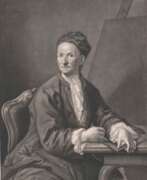

Johann Jakob Haid, a prominent German engraver and portraitist, was renowned for his work in Augsburg during the 18th century. Born into a family of artists, Haid's legacy is particularly noted for his exquisite mezzotint portraits. His career also involved a stint in England, where he was influenced by the works of English mezzotint engraver Robert Robinson.
Haid's artistic prowess was not limited to portraiture. He ventured into botanical illustration, contributing significantly to Johann Wilhelm Weinmann's "Phytanthoza iconographia". This collaboration showcases his versatility and technical skill in different art forms.
Collectors and experts in art and antiques often seek Haid's works for their unique artistic value and historical significance. His contributions to the art world, especially in mezzotint engraving, continue to be appreciated and studied. His works are a testament to the rich cultural and artistic heritage of Germany.
For those interested in the world of art and antiques, particularly in the realm of engraving and painting, Johann Jakob Haid remains a figure of significance. To stay updated on new product sales and auction events related to Johann Jakob Haid, sign up for our updates. This subscription is an excellent way to stay informed about the latest developments and opportunities in the field.


Herbert Chevalier Haseltine was an Italian-born French/American animalier sculptor, most known as an Equestrian sculptor.
He replicated many of his large works in table-top sizes. The author of a number of books on animalier art, Haseltine was well connected in American upper class society and did a three-year project to create a work for heiress Barbara Hutton. This project included two horses heads which were gilded bronze, with precious and semi precious stones. After her death the heads disappeared and resurfaced a few years ago at an auction in New York.
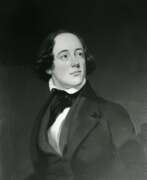

Martin Johnson Heade was an American painter known for his salt marsh landscapes, seascapes, and depictions of tropical birds (such as hummingbirds), as well as lotus blossoms and other still lifes. His painting style and subject matter, while derived from the romanticism of the time, are regarded by art historians as a significant departure from those of his peers.


Georg Holub was an Austrian landscape painter.
Holub studied at the Vienna Academy of Fine Arts and painted views of the Eastern Alps in oil and watercolor in the naturalistic style. He exhibited extensively and is considered Austria's foremost landscape painter.
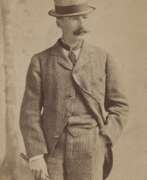

Winslow Homer was an American landscape painter and printmaker, renowned for his mastery of marine subjects and considered a preeminent figure in 19th-century American art. Born in Boston, Massachusetts in 1836, Homer was largely self-taught, starting his career as a commercial illustrator before venturing into oil painting and watercolors.
Homer's art evolved significantly over his lifetime. During the American Civil War, he worked as a correspondent, creating sketches that conveyed both the immediacy and the human cost of the war. This experience deeply influenced his later work, particularly his powerful oil paintings depicting war and its aftermath. After the war, Homer's focus shifted towards scenes of nature and rural America, reflecting a national nostalgia for simpler times. His works from this period, such as "The Cotton Pickers" and "Snap the Whip," showcase his ability to capture everyday life with poignant realism and emotional depth.
Later in his career, Homer became renowned for his watercolors and seascapes, such as "Breezing Up (A Fair Wind)" and "The Gulf Stream," which are celebrated for their dynamic composition and vivid portrayal of human interaction with nature. His late seascapes, which often depicted the rugged coastlines of Maine, are particularly noted for their dramatic intensity and hint at modernist abstraction, capturing the formidable power and timeless beauty of the sea.
Homer's works are held in high regard and continue to be featured in major museums and galleries, providing inspiration and insight into the American experience of the 19th century.
For those interested in the works of Winslow Homer and the impact of his art, you can sign up for updates related to new product sales and auction events featuring his work. This will keep you informed on opportunities to engage more deeply with Homer's enduring legacy.
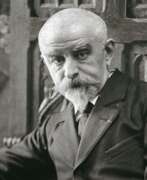

Joris-Karl Huysmans, real name Harles-Georges-Marie Huysmans, was a French writer and poet, the first president of the Goncourt Academy.
Huysmans' father was Dutch, and he always emphasized this fact. At the age of 20, the aspiring writer began working as an official in the French Ministry of the Interior, where he served all his life.
Huysmans received the greatest fame thanks to the novel À rebours ("Against Nature"). The main appeal of this writer's work lies in its autobiographical content. And his style is characterized by a wide vocabulary of the French language, a wealth of detailed and sensual descriptions, as well as sharp satirical wit. The novels are also notable for their encyclopedic documentation, ranging from a catalog of decadent Latin authors in À rebours to a discussion of the symbolism of Christian architecture in La Cathédrale.
In his work, Huysmans expresses a distaste for modern life and a deep pessimism, but in his writings one can trace the stages of intellectual life in late nineteenth-century France. Joris-Karl Huysmans was one of the earliest proponents of Impressionism. He was also a renowned literary critic and one of the founders and first president of the Goncourt Academy.
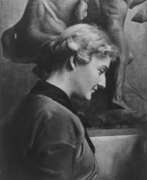

Anna Vaughn Hyatt Huntington was an American sculptor who was among New York City's most prominent sculptors in the early 20th century. At a time when very few women were successful artists, she had a thriving career. Hyatt Huntington exhibited often, traveled widely, received critical acclaim at home and abroad, and won multiple awards and commissions.
During the first two decades of the 20th century, Hyatt Huntington became famous for her animal sculptures, which combine vivid emotional depth with skillful realism. In 1915, she created the first public monument by a woman to be erected in New York City. Her Joan of Arc, located on Riverside Drive at 93rd Street, is the city's first monument dedicated to a historical woman.


Antonio Nicolo Gasparo Jacobsen was a Danish-born American maritime artist known as the "Audubon of Steam Vessels".
The public rooms of The Griswold Inn in Essex, Connecticut, the oldest continuously run tavern in the United States, features the largest privately held collection of Jacobsen's paintings.
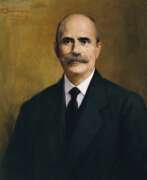

Georgios Jakobides was a Greek painter, representative of the Munich School of Greek painting.
He studied at the Athens School of Art (later the Academy of Fine Arts), then at the Academy of Fine Arts in Munich. Jakobides painted mythological scenes, genre paintings and portraits influenced by German academic realism.
His many characteristic paintings of children established Jakobides' reputation as a children's artist. As a perceptive psychologist and keen observer of human nature, he was a consummate draftsman. His painting The Reading Girl (1882), first exhibited in Munich, was admired by critics and the public.
In 1990 Georgios Jakobides returned to his homeland and became the first director of the National Gallery of Greece. In 1904 he was appointed director of the Athens School of Fine Arts, where he taught for 25 years. In addition to these activities, the artist continued to paint portraits, including of prominent Greeks.


Carl Ludwig Jessen is a German painter. He was known for his paintings on the everyday life of peasants in North Friesland. He studied painting at the Royal Danish Academy of Fine Arts in Copenhagen under Wilhelm Marstrand.
Carl Ludwig Jessen's work occupies a central place in Danish and North German art history. His paintings depict the traditions and everyday life of the North German community with a distinctly naturalistic precision.


Joseph Malachy Kavanagh was an Irish painter. He is known for his painting landscapes, seascapes, rural scenes in Ireland, France and Belgium and occasional portraits. He particularly was inspired by the landscape in and around Dublin. Kavanagh first exhibited at the Royal Hibernian Academy from 1875. In September 1881 he won the Albert Scholarship. On a trip to Brittany in 1883, he met up with a host of other young artists all of whom were influenced by the plein air naturalism of Jules Bastien-Lepage. In 1890, he published in Dublin a series of prints from etchings he created of landscape scenes from Mont St. Michel, Bruges and of "A Metallurgist" which were acquired by the British Museum in 1902. During the 1890s, he resided in Clontarf and painted numerous views around Howth and its environs, many aspects of Dublin Bay and his famous views on the sands of Portrane, Sutton, Portmarnock, Merrion and the North Bull. Another related group entails views taken along Dublin’s riverbanks.
